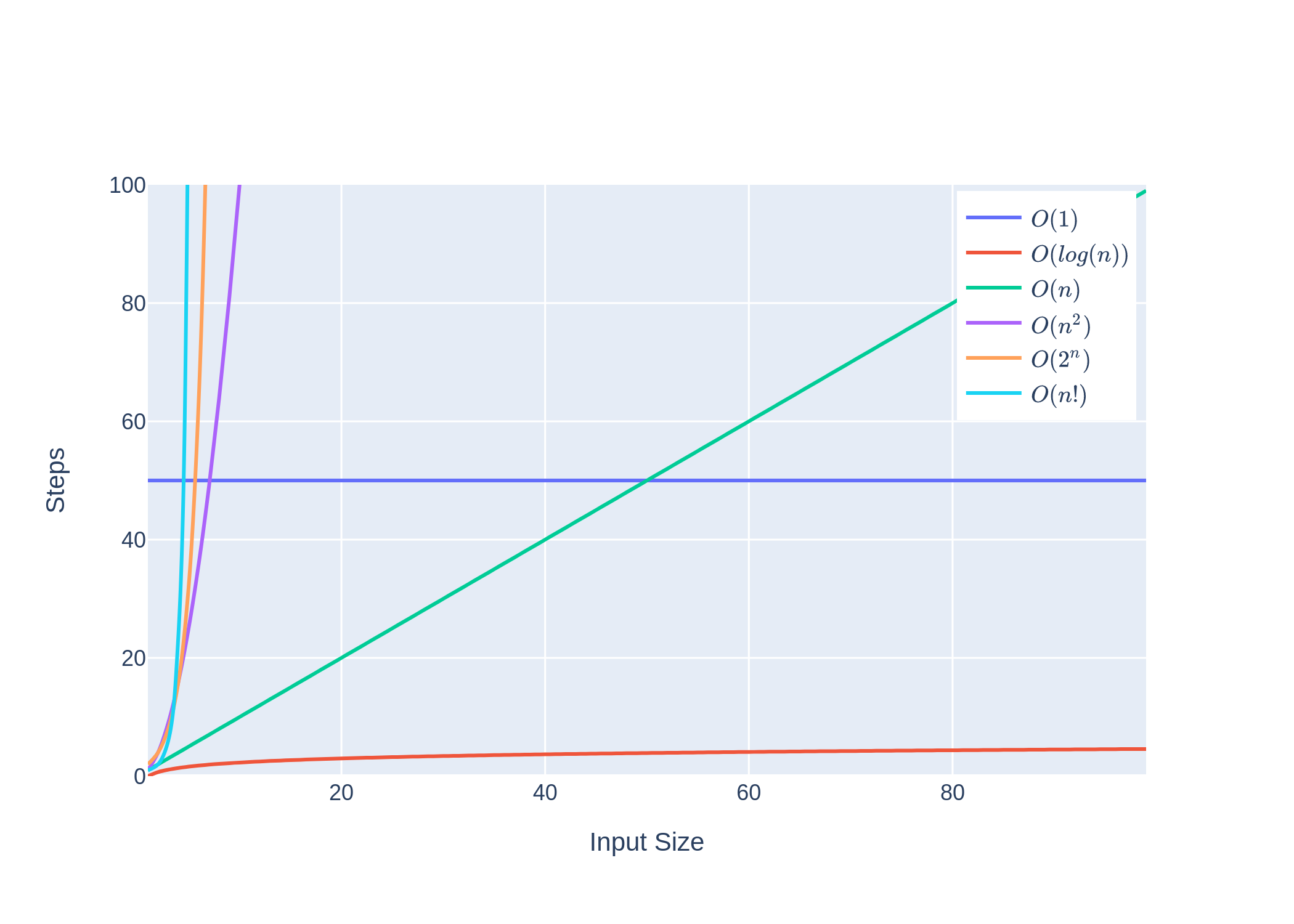Big-O Notation
Big-O notation is a form of measuring the algorithmic complexity of a function or algorithm in the worst-case scenario. This can either analyze the maximum amount of possible time or memory space needed to solve a particular problem. Solutions can be refactored or reworked to achieve a more efficient time/space complexity with the help of Big-O notation.
Common Runtimes
Here are some common runtimes:

| Runtime | Name | Description | Use Case(s) |
|---|---|---|---|
| O(1) | Constant time (in blue) | The time needed is the same, regardless of the input size. | Accessing an element in an array. |
| O(ln(n)) | Logarithmic time (in red) | The time is a logarithmic function ln() of the input size n. |
Analyzing the binary search algorithm. |
| O(n) | Linear time (in green) | The time needed is proportional to the input size n. |
Traversing an array of n-size. |
| O(n^2) | Polynomial/quadratic time (in purple) | The time needed is the input size, n, multiplied by itself. |
Bubble sort has quadratic time complexity. |
| O(2^n) | Exponential time (in orange) | The time needed doubles for every new element added to the input. | The Fibonacci Series. |
| O(n!) | Factorial time (in cyan) | The time needed is equivalent to the factorial of the input size. | The Traveling Salesman problem. |
Simplifying Big-O Expressions
When determining an expression that characterizes the time or space complexity of an algorithm, an expression may contain multiple terms ( e.g., O(n) + O(ln(n)) ). In the context of Big-O, the focus is on the relative change as the input gets large. And as the input gets larger (approaches infinity), the higher-order terms take precedence over the lower-order terms, which is why the Big-O notation would simplify to just O(n).
Python Big-O Practice
The following Python example analyzes the time/space complexity of the foo() function:
def foo(list1, list2):for item in list1:print(f"Outer loop: {item}")for item2 in list2:print(f"Inner loop: {item2}")foo(["Hello", "World"], ["Spam", "Eggs"])
The inner loop is equivalent to O(n), and the outer loop will execute the inner loop n times. Therefore, the Big-O notation for the foo() function would be n * O(n) = O(n^2).
All contributors
- TECHBREAUX6 total contributions
 CaupolicanDiaz142 total contributions
CaupolicanDiaz142 total contributions Christine_Yang271 total contributions
Christine_Yang271 total contributions- wargame001721 total contribution
Looking to contribute?
- Learn more about how to get involved.
- Edit this page on GitHub to fix an error or make an improvement.
- Submit feedback to let us know how we can improve Docs.

